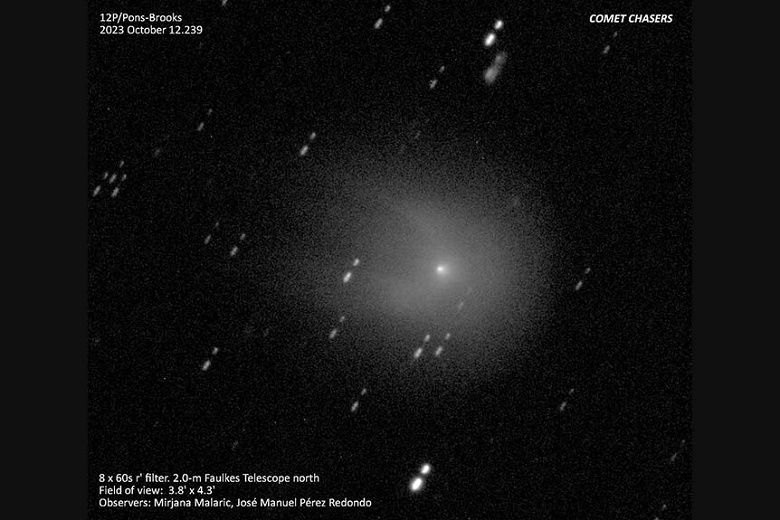In 2024, comet 12P/Pons-Brooks with strange “horns” will approach Earth. It will become bright and visible to the naked eye during a solar eclipse. Observations will help establish a connection between comets and solar radiation
Comet 12P/Pons-Brooks was first discovered by Jean-Louis Pons in 1812. It was subsequently spotted by William Robert Brooks in 1883 as 12P returned for another round of its 71-year orbit. Since then, 12P has only returned once, in 1954, and will stop by again in April 2024.
Comet 12P has a diameter of about 30 kilometers, its core is made of ice, dust, and gas, which interact with solar radiation to varying degrees, depending on how close it is to the Sun. As it approaches perihelion (the closest point in its orbit to the Sun), sunlight heats the comet’s nucleus, creating pressure that must be released.
The eruption releases gas and dust from the ice into space, creating a bright coma that astronomers can easily observe from afar. On October 5, astronomers witnessed a massive eruption. The gas and dust coming out of the comet reflected more light, making it tens of times brighter than usual.

Comet with horns 12P flies towards Earth: in 2024, the sky expects a phenomenon from a distant galaxy
Over the next few days, astronomers watched as two large horns grew from the back of 12P. The result is an object that looks a bit like the Millennium Falcon, the Star Wars ship piloted by Han Solo and Chewbacca (12P is a reference to 12 Parsecs*).
Astronomers believe that the “horns” arose due to the unusual shape of the comet, which blocks the exit of gas and dust, dividing them into two streams.
The horns have probably dissipated now, but they may grow back as the comet approaches perihelion. The closer it gets to the Sun, the more exposure it will have to endure from the Sun, and the likelihood of developing growths will increase as it gets closer. In addition, astronomers speculate that the eruptions of gas and dust further create uneven brightness when observing the comet, making the horns more visible.
In June 2024, Comet 12P will be about 232 million kilometers away and bright enough to be seen with the naked eye under clear, dark skies. And making for even better viewing conditions, perihelion falls around the same period as the 2024 total solar eclipse, allowing observers to see two phenomena simultaneously.
*Han Solo claimed that his Millennium Falcon “traversed the Kessel Arc in less than 12 parsecs.”




